This article was co-authored by Tu Anh Vu, DMD. Dr. Tu Anh Vu is a board certified dentist who runs her private practice, Tu's Dental, in Brooklyn, New York. Dr. Vu helps adults and kids of all ages get over their anxiety with dental phobia. Dr. Vu has conducted research related to finding the cure for Kaposi Sarcoma cancer and has presented her research at the Hinman Meeting in Memphis. She received her undergraduate degree from Bryn Mawr College and a DMD from the University of Pennsylvania School of Dental Medicine.
There are 11 references cited in this article, which can be found at the bottom of the page.
wikiHow marks an article as reader-approved once it receives enough positive feedback. This article received 52 testimonials and 100% of readers who voted found it helpful, earning it our reader-approved status.
This article has been viewed 1,244,926 times.
When a tooth is extracted, a wound is created within the gums and alveolar bone. Improper care can lead to serious and painful complications. Knowing how to take the necessary precautions before and after the extraction procedure will facilitate a smooth healing process.
Steps
Caring for Your Gums After a Tooth Extraction
-
1Bite tightly on the gauze. After a tooth extraction, your dentist will place a gauze on the wound to stop the bleeding. Make sure to bite down tightly on the gauze to apply pressure to the area to stop bleeding. If heavy bleeding continues, you may need to reposition the gauze pack to cover the wound more directly.
- Do not talk, as this may loosen the gauze and lead to further bleeding and delay the clot formation.
- If the gauze gets too wet, you may replace it with another; however, do not change gauze more often than necessary and do not spit out saliva, as this may hinder clot formation.
- Do not disturb the extraction area with your tongue or fingers, and avoid blowing your nose and sneezing or coughing during this time. Increased pressure may cause the wound to bleed again.[1] Avoid holding your hand over the area of extraction to avoid warming up the area.
- Remove the gauze after 30 to 45 minutes and check in the mirror to see if there is any bleeding.
-
2Take medicine for the pain. Use only the medications prescribed by your dentist. If your oral surgeon has not provided you with a prescription for pain relievers, you may take an over-the-counter pain reliever. Take the antibiotics that your surgeon gives you.
- Take the first dose of pain medication as soon as possible before the effects of the anaesthesia wear off. It’s best to complete the dosages of painkillers and antibiotics as prescribed.
Advertisement -
3Use an ice pack. Place an ice pack on your face outside the area of extraction. The ice pack reduces bleeding and controls swelling by constricting blood vessels. Use an ice pack for 10 to 20 minutes, then go without it for 30 minutes. Always wrap it in a towel or a cloth. Don’t place it directly on the skin. This can be done for the first 24 to 48 hours after extraction. After 48 hours, swelling should subside and ice will no longer provide relief.[2]
- You can use a zipped plastic bag with crushed ice or ice cubes inside if you don’t have an ice pack.
- Avoid keeping your hand in the area of extraction as you will generate heat.
-
4Use tea bags. Tea contains tannic acid, which helps blood clots form by contracting your blood vessels. Using a tea bag may help reduce bleeding. If you notice a small amount of bleeding an hour after extraction, place a moist tea bag on the extraction site and bite down tightly to apply pressure to the area. Do so for about 20 to 30 minutes. Drinking cold tea may also be helpful, but applying a tea bag directly to the area gives better results.[3]
-
5Gargle with a warm saline rinse. Wait until the morning after extraction to rinse your mouth. You can prepare a warm saline rinse by mixing one teaspoon of salt into one 8-ounce glass of water. Gargle slowly and gently without creating any pressure. Just move your tongue from one cheek to the other several times, and then spit out the solution smoothly to avoid damaging the clot.[4]
- Repeat rinsing with this solution four to five times a day for several days after the extraction, especially after meals and before bed.[5]
-
6Get plenty of rest. Proper rest ensures steady blood pressure, which helps facilitate blood clotting and healing of the gums. Do not engage in any physical activity for at least 24 hours after the extraction, and elevate the head slightly while resting to ensure that blood and/or saliva does not cause a choking hazard.[6]
- Try sleeping propped up on two pillows and avoid sleeping on the extraction side so the blood doesn't stagnate under increased heat.
- Do not bend downwards nor do any heavy lifting.
- Always sit in an upright position.
-
7Brush your teeth. After 24 hours, brush your teeth and tongue gently, but do not use the toothbrush near your extraction site. Instead, rinse gently using the saline solution described above to avoid damaging the clot. Follow this procedure for the next three to four days.[7]
- Flossing and using mouthwash can be kept in your regular routine. Just be sure not to use the floss near extraction site. Use an antiseptic mouthwash or a rinse prescribed by your dentist to help kill bacteria and prevent any infection.
-
8Use Chlorhexidine gel. This can be applied to the extraction area starting the next day after extraction for faster healing. It can also prevent bacteria from forming near the extraction site. This also helps reduce pain and discomfort.[8]
- Do not apply the gel directly into the socket. Just apply the gel to the area around the extraction site.
-
9Apply a warm compress after 24 to 48 hours. This helps increase blood circulation, which promotes healing, and reduces swelling and discomfort. 36 hours after extraction, apply a warm, wet towel externally to the affected side of the face in a 20 minutes on, twenty minutes off rotation.
-
10Watch your diet. You'll want to wait until the anesthesia has completely worn off before attempting to eat food. Start with soft foods, chewing on the opposite side of your mouth as the extraction site. You may want to eat something cold and soft, like ice cream, to soothe the pain and provide you with some nourishment. Avoid anything hard, crunchy, crumbly, or hot, and do not use a straw, as this may dislodge a blood clot from your gums.[9]
- Eat regularly and don’t skip meals.
- Eat food that is at room temperature or cold, but never warm or hot.
- Eat soft and mild-cold food like ice cream, smoothies, pudding, gelatin, yogurt, and soups. These are good especially immediately after an extraction because they soothe discomfort caused by the procedure. Make sure that what you eat isn’t too cold or hard, and that you don’t chew on the extraction area. Hard-to-chew foods (e.g. cereal, nuts, popcorn, etc.) can be painful and difficult to eat, and may injure the wound. Gradually change your food from liquids to semisolids to solids as the first few days pass.
- Avoid straws. Drinking with a straw creates suction pressure within the mouth, which may cause bleeding and prevent proper clotting, which can lead to dry sockets.[10]
- Avoid spicy food, sticky food, hot drinks, caffeine products, alcohol, and carbonated drinks.
- Avoid tobacco/alcohol for at least 24 hours after extraction.
Understanding the Healing Process After a Tooth Extraction
-
1Expect swelling. Your gums and your mouth will swell as a response to the surgery, and you will probably be in pain. This is normal, and usually begins to subside after about two or three days. During that time, use an ice pack held against the affected cheek to soothe pain and reduce swelling and inflammation.
-
2Expect bleeding. After a tooth extraction, there is a lot of bleeding from the tiny blood vessels within the gums and bone. Bleeding should never be extreme or excessive, however, in some cases your dentist may place sutures to help with the healing process. If this happens, it may mean that post-surgical packs are being placed between the teeth and not directly on the wound. Consult your surgeon and reposition packs as necessary.
-
3Don't disturb the clot. A clot will form within the first day or two, and it's extremely important not to disturb or remove it. Clotting is a necessary first step toward healing, and removing or disturbing the clot may prolong the healing process and lead to infection or pain.[11]
-
4Expect epithelial cell layer formation. For the next 10 days, the cells of the gums will proliferate to form a layer of epithelium that will bridge the gap produced by a tooth extraction. It is important not to disrupt this process while the wound is healing.
-
5Expect bone deposition. After epithelial layer formation, the bone-forming cells in your bone marrow are activated. The process usually begins along the side (lateral) walls of the socket and continues toward the center.[12] This will completely close the space created due to tooth loss. The complete closure of the socket created by bone deposition will take up to a year, but gum will cover the socket after just two weeks so there is nothing to worry about, as it will appear completely healed.
Caring for Your Gums Before Going In for a Tooth Extraction
-
1Inform your oral surgeon about any pre-existing conditions you may have. You should also inform your surgeon about any medications you are currently taking. These may complicate the surgical procedure and cause problems during or after surgery.
- Patients with diabetes generally take a longer time to heal after any dental treatment because bleeding also takes longer. Maintain a blood-sugar level close to normal to ensure faster healing after an extraction, and inform your dentist about your diabetic condition and your recent glucose test results. Your dentist will decide whether or not your blood sugar level is adequately under control for an extraction procedure.[13]
- Patients with high blood pressure should be aware that certain blood pressure medications may cause bleeding from the gums. This could cause complications if the medication is not ceased prior to a tooth extraction surgery. Inform your surgeon about any medications you are currently taking or have recently taken.[14]
- Patients taking anticoagulants or blood-thinning drugs like warfarin and heparin should inform their surgeon about those medications before dental extractions, as this class of medication will hinder blood clotting.[15]
- Patients taking oral contraceptives containing estrogen may have complications with blood clotting. Consult with your surgeon if you are currently taking an oral contraceptive.[16]
- Some long term medications will cause mouth dryness, which may lead to infection after a tooth extraction. Consult with your surgeon before any procedure. You should also consult with your doctor before changing any medications or dosages that you are taking.
-
2Understand that smoking may cause problems. Smoking is a known factor in the development of gum disease.[17] In addition, the physical act of smoking may cause the dislodgement of blood clots, which are necessary for healing to take place in the gums. Tobacco may also irritate the sensitive wound and complicate the healing process.
- If you are currently a smoker, consider quitting before your tooth extraction.
- If you do not intend to quit smoking, be aware that patients should not smoke a cigarette for at least 48 hours after surgery. Patients who chew tobacco or "dip" should not use tobacco for at least seven days.
-
3Consult with your primary physician. Letting your primary doctor know about the surgery before undergoing a tooth-extraction procedure may help avoid potential problems caused by medications you are taking or conditions you may have.
Expert Q&A
-
QuestionIf my socket is infected, what does it look like? Is white the normal colour when it is healing?
 Cristian Macau, DDSDr. Macau is an oral surgeon, periodontist, and aesthetician at Favero Dental Clinic in London. He received his DDS from Carol Davila University of Medicine in 2015.
Cristian Macau, DDSDr. Macau is an oral surgeon, periodontist, and aesthetician at Favero Dental Clinic in London. He received his DDS from Carol Davila University of Medicine in 2015.
Doctor of Dental Surgery If any infection is present you will be in a lot of pain. This complication is called dry socket, pain starts usually after 24 hours and barely calms down on medication. A white - yellow colour is normal and represents the fibrin which covers the wound and is the normal stage of healing.
If any infection is present you will be in a lot of pain. This complication is called dry socket, pain starts usually after 24 hours and barely calms down on medication. A white - yellow colour is normal and represents the fibrin which covers the wound and is the normal stage of healing. -
QuestionI had 3 wisdom teeth and another tooth next to a wisdom tooth removed. All of the sockets are closed except the one where the two teeth were pulled together. It is still open. Is that normal?
 Cristian Macau, DDSDr. Macau is an oral surgeon, periodontist, and aesthetician at Favero Dental Clinic in London. He received his DDS from Carol Davila University of Medicine in 2015.
Cristian Macau, DDSDr. Macau is an oral surgeon, periodontist, and aesthetician at Favero Dental Clinic in London. He received his DDS from Carol Davila University of Medicine in 2015.
Doctor of Dental Surgery It is normal because the wound is larger and teeth being close together, the gum takes longer to grow over the bone. Make sure the area is properly cleaned and no food gets stuck in after meals. Go for a consult after one week to make sure everything is in order.
It is normal because the wound is larger and teeth being close together, the gum takes longer to grow over the bone. Make sure the area is properly cleaned and no food gets stuck in after meals. Go for a consult after one week to make sure everything is in order. -
QuestionHow do gums heal after tooth extraction?
 Tu Anh Vu, DMDDr. Tu Anh Vu is a board certified dentist who runs her private practice, Tu's Dental, in Brooklyn, New York. Dr. Vu helps adults and kids of all ages get over their anxiety with dental phobia. Dr. Vu has conducted research related to finding the cure for Kaposi Sarcoma cancer and has presented her research at the Hinman Meeting in Memphis. She received her undergraduate degree from Bryn Mawr College and a DMD from the University of Pennsylvania School of Dental Medicine.
Tu Anh Vu, DMDDr. Tu Anh Vu is a board certified dentist who runs her private practice, Tu's Dental, in Brooklyn, New York. Dr. Vu helps adults and kids of all ages get over their anxiety with dental phobia. Dr. Vu has conducted research related to finding the cure for Kaposi Sarcoma cancer and has presented her research at the Hinman Meeting in Memphis. She received her undergraduate degree from Bryn Mawr College and a DMD from the University of Pennsylvania School of Dental Medicine.
Board Certified Dentist The first thing to do is avoid sipping for about three or four days because if you sip or you drink through a straw, your body isn't able to form a blood clot. Forming a blood clot within the socket of the extraction is important because without that blood clot, you're going to get a dry socket. Then, make sure to rinse frequently with warm salt water to help it heal and just try to keep that area super clean.
The first thing to do is avoid sipping for about three or four days because if you sip or you drink through a straw, your body isn't able to form a blood clot. Forming a blood clot within the socket of the extraction is important because without that blood clot, you're going to get a dry socket. Then, make sure to rinse frequently with warm salt water to help it heal and just try to keep that area super clean.
Warnings
- If you feel unusual pain after a week of extraction, visit your dentist.⧼thumbs_response⧽
- Do not drink coffee within at least six hours before the extraction is done, as it may interfere with the anesthetic effect and anesthesia may not install.⧼thumbs_response⧽
- If the pain gets worse after two days, visit your dentist immediately. The pain may indicate dry socket.⧼thumbs_response⧽
- Light bleeding and discolored saliva will be present during the first 12 to 24 hours. If heavy bleeding has not stopped three to four hours after the procedure, visit your dentist immediately.[18]⧼thumbs_response⧽
- If you feel sharp, bony fragments, called bone sequestra, left behind after the surgery, inform your dentist. Gradual bone reformation is normal, but shards of dead bone left behind by the surgery may be painful, and you may need to have them removed. Consult with your dentist or oral surgeon if you believe there may be painful dead bone fragments left behind following an extraction.⧼thumbs_response⧽
References
- ↑ Tu Anh Vu, DMD. Board Certified Dentist. Expert Interview. 20 May 2020.
- ↑ http://www.iowaoralsurgery.com/surgical-instructions/extractions/
- ↑ http://www.uofmmedicalcenter.org/healthlibrary/Article/84678
- ↑ Tu Anh Vu, DMD. Board Certified Dentist. Expert Interview. 20 May 2020.
- ↑ Tu Anh Vu, DMD. Board Certified Dentist. Expert Interview. 20 May 2020.
- ↑ http://www.uofmmedicalcenter.org/healthlibrary/Article/84678
- ↑ http://www.iowaoralsurgery.com/surgical-instructions/extractions/
- ↑ http://www.thedentalelf.net/2012/12/13/moderate-evidence-that-chlorhexidine-rinse-or-gel-provides-a-benefit-in-preventing-dry-socket/
- ↑ http://www.iowaoralsurgery.com/surgical-instructions/extractions/
- ↑ Tu Anh Vu, DMD. Board Certified Dentist. Expert Interview. 20 May 2020.
- ↑ http://www.maxillocare.com/surgical-instructions/after-extractions.html
- ↑ http://www.ncbi.nlm.nih.gov/pmc/articles/PMC3220149/
- ↑ http://my.clevelandclinic.org/health/diseases_conditions/hic_Diabetes_Basics/hic_Diabetes_and_Alcohol/hic_Oral_Health_Problems_and_Diabetes
- ↑ http://www.drweil.com/drw/u/id/QAA337888
- ↑ http://www.ncbi.nlm.nih.gov/pubmed/15530128
- ↑ http://www.ncbi.nlm.nih.gov/pmc/articles/PMC1436047/
- ↑ http://www.medicinenet.com/gum_problems/page2.htm
- ↑ http://www.iowaoralsurgery.com/surgical-instructions/extractions/
About This Article
To heal your gums after a tooth extraction, bite down tightly on the gauze your dentist placed on the wound in order to stop the bleeding. You should also take the antibiotics your dentist gives you, or an over the counter pain reliever, to deal with the pain. Additionally, place an ice pack on the outside of your face to keep down the swelling and reduce bleeding. When you wake up the next morning, gargle with a solution of warm water and salt, and apply Chlorhexidine gel to keep bacteria from forming around the extraction site. For tips on when and what to eat after a tooth extraction, keep reading!
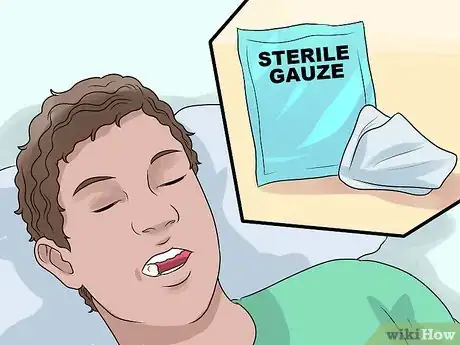

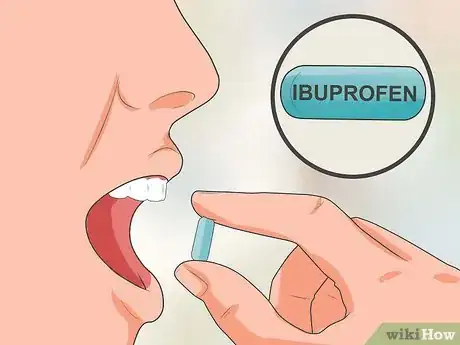
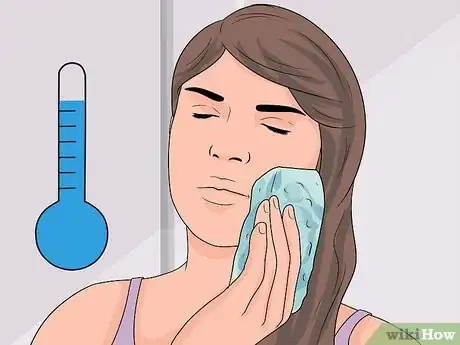
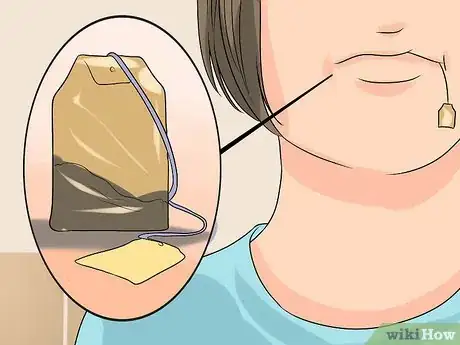
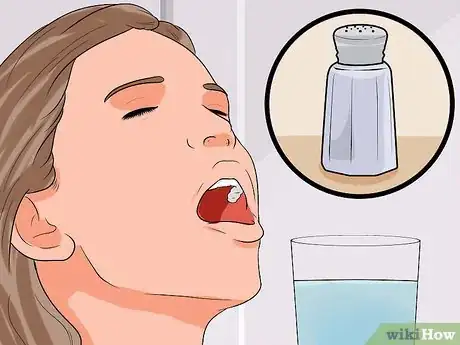
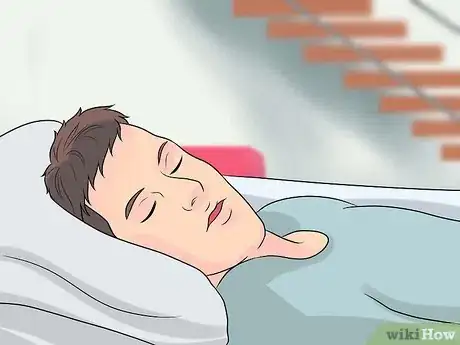
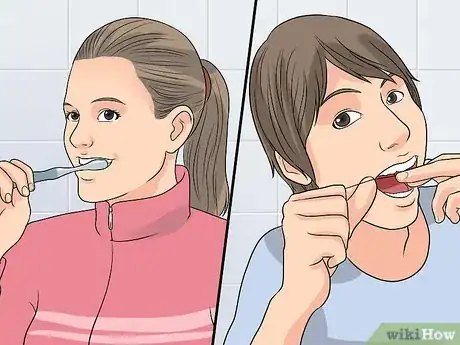



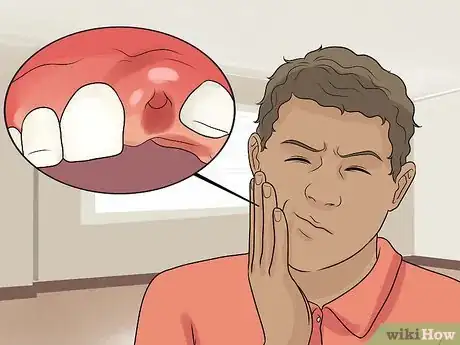
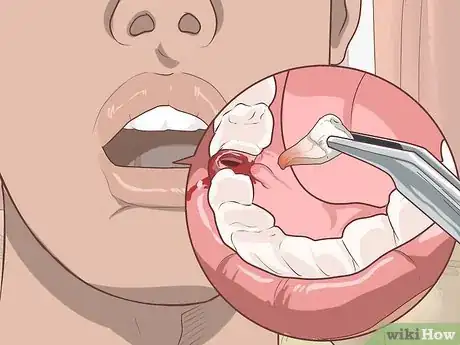
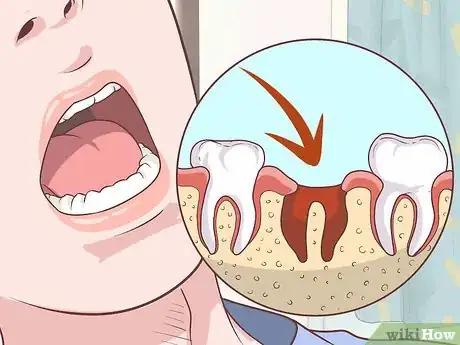

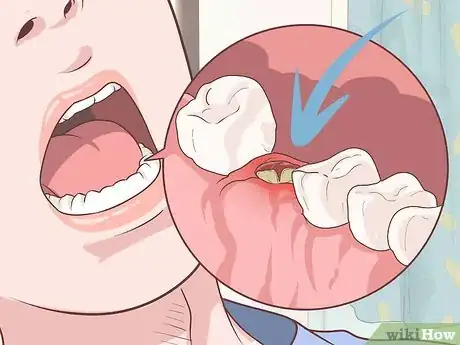
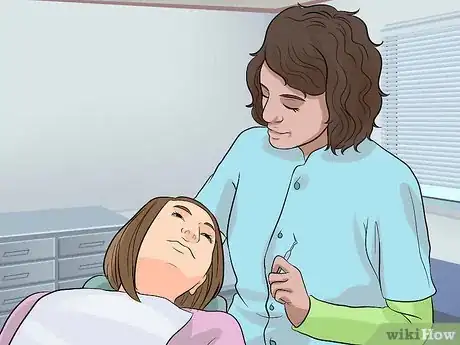
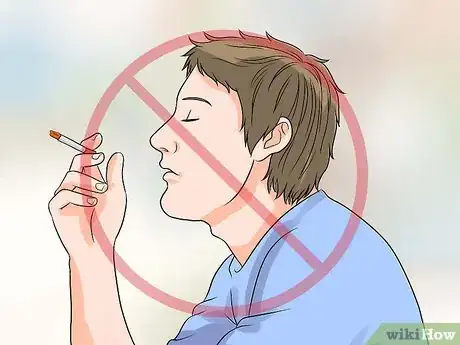

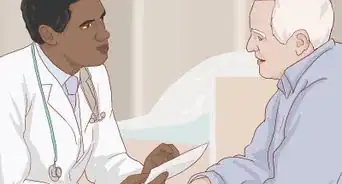



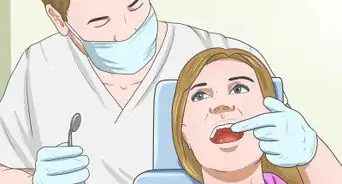
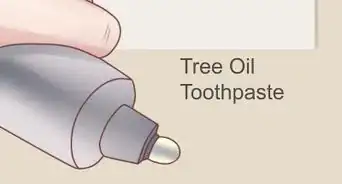



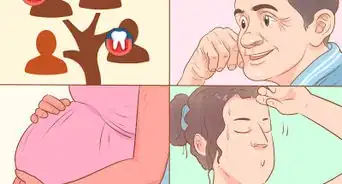
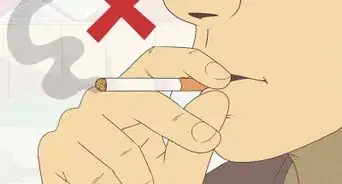
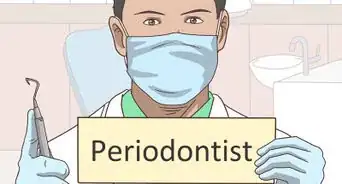
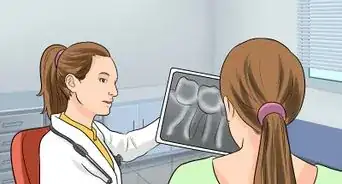

















































Medical Disclaimer
The content of this article is not intended to be a substitute for professional medical advice, examination, diagnosis, or treatment. You should always contact your doctor or other qualified healthcare professional before starting, changing, or stopping any kind of health treatment.
Read More...